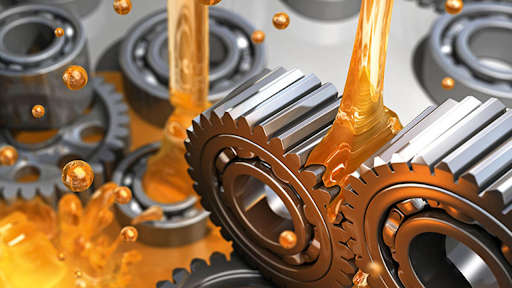Introduction to Hypoid Gear Oil
In the world of automotive and industrial mechanics, hypoid gear oil is a term that often surfaces when discussing gearboxes and differential systems. But what exactly is hypoid gear oil, and why is it so crucial for maintaining optimal gear performance?
Unlike standard gear oils, hypoid gear oil is specially engineered to handle the unique stress and friction of hypoid gears. Hypoid gears are a type of spiral bevel gear, usually found in automotive differentials, that operate with high sliding contact. This setup generates extreme pressure and heat, making ordinary gear oil ineffective and even damaging over time.
In this comprehensive guide, we will explore what hypoid gear oil is, its characteristics, applications, benefits, and the science behind why it’s essential. Whether you’re a mechanic, a car enthusiast, or an industrial engineer, understanding hypoid gear oil can significantly impact the longevity and efficiency of your equipment.
What Is Hypoid Gear Oil?
Hypoid gear oil is a high-performance lubricant formulated with extreme pressure (EP) additives, anti-wear agents, corrosion inhibitors, and thermal stabilizers. These components are specifically designed to protect hypoid gears, which experience a combination of rolling and sliding contact.
The key difference between hypoid gear oil and regular gear oil lies in its additives. The EP additives in hypoid oil are crucial for preventing wear and pitting in the gear teeth, especially under conditions of high torque and load.
Hypoid gear mechanisms are typically used in rear axles of trucks, SUVs, and high-performance vehicles. Because of the offset of the pinion gear, hypoid gears require a lubricant that can endure more shear stress and resist breakdown at high temperatures.
Properties of Hypoid Gear Oil
When selecting a hypoid gear oil, it’s important to consider the following properties:
1. Viscosity
Viscosity determines how well the oil flows at different temperatures. Most hypoid gear oils are rated using SAE grades like 75W-90, 80W-90, or 85W-140.
2. Extreme Pressure (EP) Additives
These are chemical compounds (often sulfur-phosphorus-based) that create a protective film on gear surfaces during high-load situations.
3. Thermal Stability
Hypoid gear oil must resist oxidation and viscosity breakdown at high temperatures commonly found in differentials.
4. Corrosion and Rust Inhibitors
Helps protect the gear surfaces from rust and corrosion, even in humid or water-exposed environments.
5. Anti-Foaming Agents
Foam can reduce lubrication efficiency. Hypoid gear oil is formulated to minimize foaming during high-speed operation.
Applications of Hypoid Gear Oil
1. Automotive Differentials
The most common use of hypoid gear oil is in the rear axles and differentials of vehicles, especially trucks, SUVs, and performance cars.
2. Heavy-Duty Machinery
Construction equipment, agricultural tractors, and other industrial machines with high-load gear systems rely on hypoid gear oil for smooth operation.
3. Marine Transmissions
Some marine drives also incorporate hypoid-style gearing and require compatible hypoid gear oil for optimal protection against saltwater corrosion.
4. Commercial Fleets
Fleet operators often use high-quality hypoid gear oil to increase the service intervals of their vehicles and improve fuel efficiency.
Benefits of Using Hypoid Gear Oil
Using the correct hypoid gear oil offers several advantages:
1. Enhanced Wear Protection
The EP additives form a film on gear surfaces, reducing metal-to-metal contact and wear.
2. Longer Gear Life
With proper lubrication, hypoid gears experience less friction, which translates to a longer lifespan for differentials and gearboxes.
3. Temperature Resistance
Hypoid gear oil performs well even under extreme heat, preventing breakdown and oxidation.
4. Improved Efficiency
Reduced friction and heat mean that less energy is lost, improving the efficiency of power transmission.
5. Reduced Maintenance Costs
Proper lubrication means fewer breakdowns, less downtime, and longer service intervals.
Types of Hypoid Gear Oil
1. Mineral-Based Hypoid Gear Oil
Made from refined petroleum, mineral oils are economical and suitable for older or less demanding gear systems.
2. Synthetic Hypoid Gear Oil
Formulated from chemically engineered base oils, synthetic oils offer superior temperature stability, oxidation resistance, and longer service life.
3. Semi-Synthetic Hypoid Gear Oil
A blend of mineral and synthetic oils, offering a balance between performance and cost.
Choosing the Right Hypoid Gear Oil
When selecting a hypoid gear oil, consider the following:
- Manufacturer specifications: Always refer to the vehicle or equipment manufacturer’s guidelines.
- Climate: Colder climates may benefit from lower-viscosity grades like 75W-90.
- Load and usage: Heavy-duty use demands higher viscosity and better EP performance.
- Oil change interval: Synthetic oils last longer, reducing the need for frequent oil changes.
Common Grades of Hypoid Gear Oil
Here are some common SAE viscosity grades for hypoid gear oil:
- 75W-90: Excellent for year-round use, offering good performance in both cold and hot temperatures.
- 80W-90: A standard grade used in many light- to medium-duty vehicles.
- 85W-140: Suitable for high-load applications and hot environments.
Hypoid Gear Oil vs. Regular Gear Oil
| Feature | Hypoid Gear Oil | Regular Gear Oil |
| EP Additives | Yes | Sometimes |
| High Load Capability | Excellent | Moderate |
| Temperature Resistance | High | Varies |
| Ideal Use | Hypoid Gears, Differentials | Manual Transmissions, Low-Stress Gears |
Hypoid gear oil is not interchangeable with standard gear oil due to its specialized formulation. Using the wrong oil can result in gear wear, noise, and potential failure.
Signs You Need to Change Your Hypoid Gear Oil
- Unusual gear noise
- Vibration or grinding in the differential
- Overheating
- Visible metal shavings during oil drain
- Dark or burnt-smelling oil
Changing your hypoid gear oil at recommended intervals ensures the longevity of your gear systems.
How to Change Hypoid Gear Oil
- Lift the vehicle and safely support it.
- Locate the differential fill and drain plugs.
- Drain the old oil completely.
- Inspect the oil for metal shavings or debris.
- Clean the drain plug and reinstall.
- Fill with new hypoid gear oil until it reaches the fill hole level.
- Reinstall the fill plug and test-drive to check for leaks.
Always wear safety gear and dispose of used oil properly.
Top Brands Offering Hypoid Gear Oil
- Mobil 1 Synthetic Gear Lubricant
- Royal Purple Max Gear
- Valvoline SynPower
- Castrol Axle Limited Slip
- Lucas Oil Heavy Duty Gear Oil
These brands provide high-quality hypoid gear oil options across multiple SAE grades and performance levels.
FAQ
1. What is hypoid gear oil used for?
Hypoid gear oil is used primarily in differentials and rear axles where hypoid gear sets require extreme pressure and anti-wear protection.
2. Can I use regular gear oil instead of hypoid gear oil?
No, regular gear oil lacks the necessary EP additives required for protecting hypoid gears under high load and friction.
3. How often should I change hypoid gear oil?
Typically every 30,000 to 60,000 miles, or as specified by your vehicle manufacturer.
4. What happens if I use the wrong gear oil?
Using incorrect oil can cause excessive wear, overheating, gear noise, and even gearbox failure.
5. Is hypoid gear oil the same as differential oil?
Yes, many differential systems specifically require hypoid gear oil, but always verify with your owner’s manual.
6. Can hypoid gear oil be synthetic?
Yes, synthetic hypoid gear oils are available and offer better performance in extreme temperatures and loads.
7. Does hypoid gear oil expire?
Sealed containers can last several years, but once opened, it’s best to use it within a year for optimal performance.
8. Why does hypoid gear oil smell bad?
The sulfur-phosphorus EP additives give it a strong odor, which is normal and part of its protective properties.
9. How do I check hypoid gear oil levels?
Use the fill plug on the differential. If oil is at the edge of the hole, the level is good.
10. Can I mix different brands of hypoid gear oil?
It’s best to avoid mixing unless both oils meet the same performance specifications.
Conclusion
Understanding hypoid gear oil is essential for anyone responsible for maintaining gear-driven machinery or vehicles. This specialized lubricant ensures that hypoid gears function efficiently under high loads, reducing wear, heat, and friction. Whether you’re operating a heavy-duty truck or managing a fleet, using the right hypoid gear oil can significantly extend the life of your equipment and lower maintenance costs.Choose wisely, follow manufacturer guidelines, and always prioritize regular oil changes to keep your systems running smoothly.

